Before jumping into conversion optimization, you need to identify your site visitor by recognizing, for example, concerns, motivations, uncertainties, and trigger words.
One of the first tasks we do as a company, which has been helping marketers optimize their content and their conversion rates, is to delve into understanding the market as best we can prior to initializing the recommendation process.
Most companies are aware of the importance of knowing customers, but few comprehend all that this recognition entails, especially online. The majority are still keeping their heads in the sand and overlooking the high costs of stepping away from clients.
The Global Customer Service Barometer, after interviewing more than 1,000 adult customers on how they view their brands, brings disappointing results 38% of the participants believe that businesses are not customer-oriented and fail to provide enough attention.
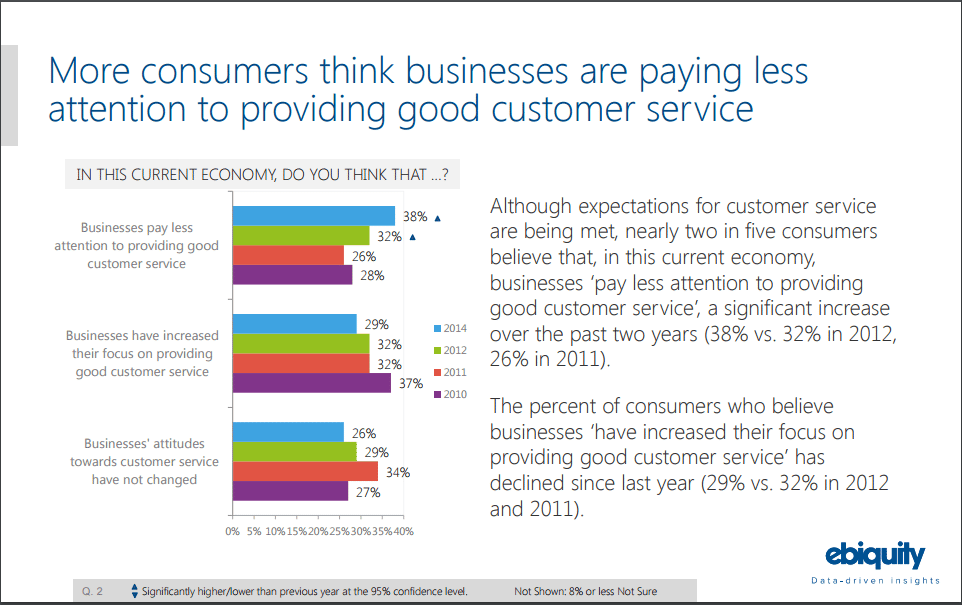
Image source: AmericanExpress
As data shows, many people are frustrated by how businesses are still using the same outdated methods to interact with their customers and not paying enough attention to them to satisfy their needs.
We find that companies face one of two challenges when it comes to integrating their marketing data into their selling process:
- Smaller companies do not have the know-how or the means to conduct research to identify and segment their market effectively. Some of them might not even appreciate the value market research brings to their business. As a consequence, they only make assumptions about their clients, which are often wrong, and risk missing crucial segments that can generate large.
- On the other end of the spectrum, many mid to large businesses perform their due diligence researching the market but do not know ways of applying the results. They are unable to integrate that data into actionable insights that can be implemented in their selling process, marketing campaigns, or on their websites.
Regardless of the size of the company, the overwhelming question is: how do you use the marketing data to make sure website copy, design, navigation, and overall site structure will engage most visitors, if not all, and move a high percentage of them through the conversion funnel?
When the average e-commerce store converts only 3-5% of its visitors into customers, you must pause and wonder what is stopping the other 95% from moving forward with the purchase process.
Conversion optimization starts with gathering detailed market information. The more detailed the information, the more precision you will find in the optimization process. You then use that data to shape your website’s interactions with visitors.
The most efficient way to address market concerns is through the creation of buyer personas.
But what are personas? And how can they help with conversion optimization?
Buyer personas are models, examples, and archetypes that humanize and individualize a precise target market. They are hypothetical individuals who represent target consumers.
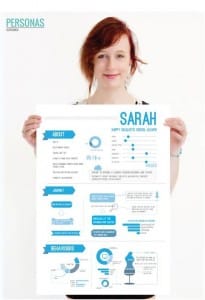
Image source: Amy Cotton
Through persona creation, you should be able to relate to customers on an individualized level to bring personalization, engagement, and enthusiasm into your website by knowing what appeals to them and what turns them off.
And because buyer personas are at the helm of conversion optimization, they should guide every aspect of your website, including user interface and screen design, process flow, and web copy development.
Too many websites cater to the masses and not to a single person. As a result, the copy is dull, the design is boring, and visitors are left frustrated.
Creating your own buyer personas will help you relate to the different types of personalities of your customers and help you address their needs accordingly.
Market Segmentation Vs. Persona Creation
When we first present the concept of buyer personas to our clients, they frequently confuse persona development with market segmentation. These are not the same. However, persona creation relies heavily on market segmentation.
In order to create buyer personas, you need to understand the market segmentation and the various customer profiles you compiled with your team. Segmentation is the division of the market or population into subgroups with similar motivations.
Keep also in mind that there is a huge difference between marketing to a business (B2B) and marketing to a customer (B2C) although both of them are selling to a person.
The widely used bases for segmenting business-to-customer markets usually include geography, demography, personality (behavior), and psychographic factors. As for the bases used for segmenting business-to-business (B2B) markets, they are different; they include the location, the company type, and the behavioral characteristics.
This article focuses more on the techniques used in B2B markets during the buyer personas creation process for such businesses.
The use of personas is intensively growing, as more than 93% of companies that exceed revenues and lead goals are using personas by segmenting their database accordingly to personalize experiences for their visitors.
A recent study on the most important elements of effective B2B content has demonstrated that audience relevance ranks the highest at 90%.
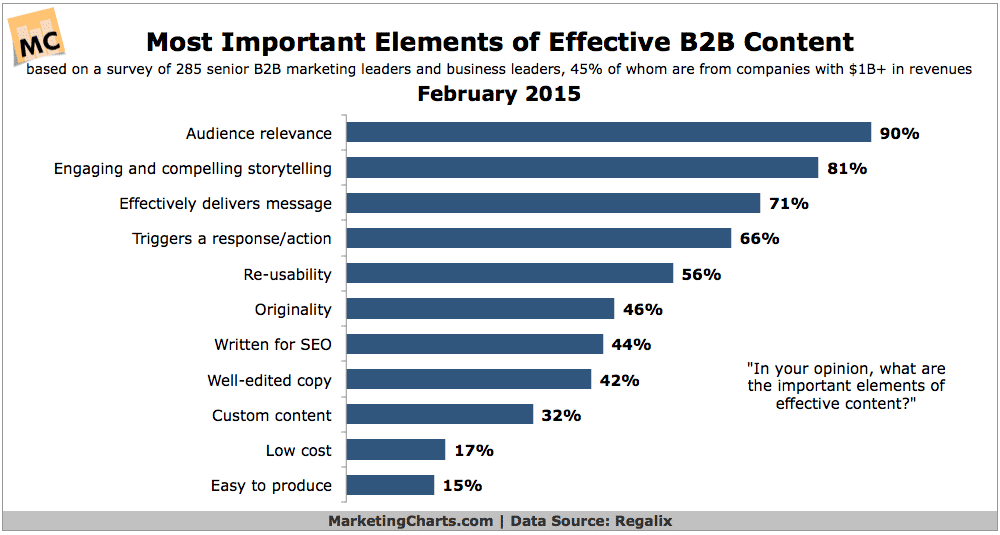
Image source: Marketing Chart
In another survey, with 640 global senior B2B marketing executives and business leaders, half of them in the internet and software industries, 69% of participants agree that understanding buyers’ needs or pain points is the most effective go-to-market strategy for a product launch.
These studies show it’s now high time for marketers and business owners to put their feet in the customers’ shoes and start building up buyer personas that reflect the real needs and demands of their customers.
Every company, online or offline, must comprehend the market they are working in as well as the best techniques to better cater to their ideal customers.
You can go in-depth and analyze the various demographics and similarities within the market to create segmentations and narrow the target market. This information must be quite detailed to create the ideal target customer.
How Are B2B Marketers Building Buyer Personas?
Cintell surveyed 137 B2B marketers to find out how they build up their buyer personas and what kind of data they use.
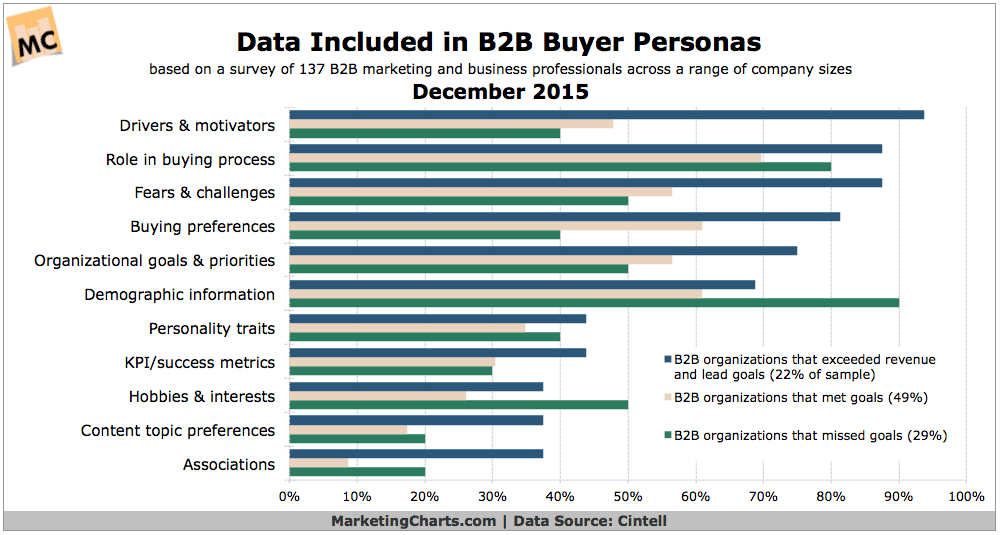
Image source: Marketing Charts
The survey segmented these marketers into three different groups, as shown in the graph above. The first group, the one doing well by exceeding revenues and lead goals, was conducting qualitative interviews for both customers and non-customers, including the executive team and the salespeople. The data obtained were more likely segmented by demographic factors than other fields mentioned above, and their focus was oriented towards addressing the fears and motivations of their customers because these are more applicable to buyers as individuals.
Consider a site that sells discount furniture, catering to three different market segments:
- Middle-income families, middle-aged, 70 – 100k household income
- College students, 10-25k income
- Building company
The three markets differ in income, personality traits, and needs. Their interests and motivations behind the purchase are different. One group is purchasing for their families, the other for themselves, and one for potential clients or home staging. The site’s goal is to appeal to all markets equally. Buyer personas help you achieve this goal by guaranteeing you capture each group’s interest.
In this scenario, we would introduce Jennifer, a 45-year-old homemaker. She likes to update her home furniture every year. She enjoys decorating her home and always needs to update because of her rowdy kids. She is price-conscious but looking for something sturdy with good quality. She just wants to ensure that her satisfaction is guaranteed because she needs quality items. Return policies are apparently imperative to her.
Compare these traits to Evan’s, a 37-year-old builder who must find great, unique pieces to stage the homes his company builds. He wants to find pieces that are neutral enough so that prospects can imagine themselves in the home. He also tries to find items that will pique prospects’ interest so he can sell them with the home. He is not as concerned about price but does have a budget.
Finally, the website targets Sally, a 19-year-old college student who is rooming with two other friends. She needs cheap, nice furniture items that are a bit trendier. She is trying to make a quick decision because move-in is within the next couple of weeks. She needs white-glove delivery and someone to build the pieces. She is looking for practical solutions for their tiny space and considering items with tons of storage.
Selling to these individuals is a lot easier than to a general market segment because you can put yourself in Sally, Evan, and Jennifer’s shoes. You can anticipate their concerns and personalize the experience with them.
Buyer personas pave the way for:
- Understanding what makes different segments tick, what appeals to them, and what turns them off.
- Relating to the various personality types that will come, address their needs accordingly.
- Recognizing that all users come at different buying stages. Evoking empathy within site developers, marketers, and sales teams.
- Knowing competition well, starting from which market segments are likely to identify with a competitor more than with you, and why?
The Four Temperaments
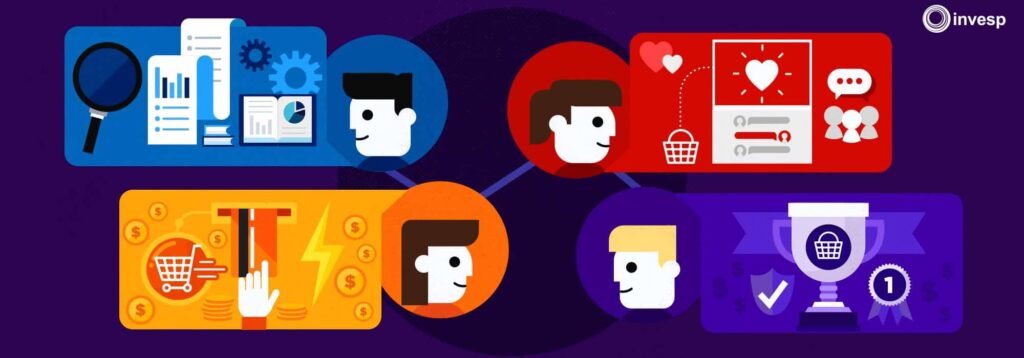
Many philosophers and psychologists have played with the concept of temperaments at length, beginning with Aristotle in 325 BC, passing by Carl Jung in the 1920s, to a modern-day version with David Keirsey in the 1950s. The concept boils down to the fact that humans carry particular sets of characteristics. For a marketer, understanding what makes each of the temperaments tick can help move the needle in conversions.
While you create each persona, you can also assign a temperament (or combinations of them). That way, when designing, you may have Jennifer in mind, but now you also have in mind that she is a caring person, triggered and motivated by social proof, which can be something to address on the website.
These are the four temperaments to consider.
Logical
A logical persona is meticulous, methodical, and detail-oriented.
When a visitor of a logical nature enters your site, she searches for every single detail of your product and services. She also expects your site to offer answers in a logical, systematic, and easy-to-locate fashion.
Someone who is logical is going to research your product or service longer, reading and looking for information about it more than others. The purchasing decision for logical personas comes as a result of researching, shopping around, and getting to know more of your and your competitors’ offers.
How do you address logical personas?
When targeting a logical persona, your site should:
- Have easy-to-locate information.
- Contain answers to all questions about your company (date of establishment, range of products and services offered, reputation).
- Refer visitors to the methodology, about us page, or the blog.
- Detailed product pages with detailed descriptions.
- Systematic explanation of your services.
Caring
The caring persona is impacted by people.
A caring visitor to your site looks for reviews and testimonials. She searches for the opinions of others, as well as the number of customers who have used your product or hired your service. People with this temperament are trusting. Their buying decision is impacted by what others feel and say about your company.
The purchasing decision for caring personas takes some time. They are not disciplined in considering different alternatives, which makes selling them a little bit hard.
How do we address caring personas?
When targeting a caring persona, your site should:
- Provide testimonials.
- Present news quotes and announce awards received.
- Show numbers of clients.
- Display reviews on product pages.
- Showcase social media mentions.
Impulsive
The impulsive persona buys fast and regrets fast.
The credit-card-in-hand type of visitor may purchase on impulse but often regrets the decision. Attempt to understand how to get them to click right away, with the right elements visible. However, try to avoid the regret phase by giving them the information they will need through the conversion process.
Impulsive personas are determined to make a purchase. They need to find a reason to buy from you as soon as they enter your site, or they will leave to make the purchase on another site.
Impulsive buyers are an e-commerce company’s dream client.
How do you address impulsive personas?
When targeting an impulse persona, your site should:
- Present benefits in the form of 3 or 4 extremely convincing bullets.
- Include a big “call to action” in a bright color, immediately following the benefits.
- Make sure the check-out process is smooth and fast.
Aggressive
The aggressive persona is very competitive in nature.
This persona type likes to be outstanding and to acquire the finest products and services. Convincing them that you offer premium, first-rated products or services will help you win them over. These personality types strive to be the best by flushing out the competition.
If an aggressive persona visitor sees a reason that your product or service will place them ahead of the crowd, then you can be sure that they will be loyal customers.
How do you address aggressive buyer personas?
When targeting an aggressive persona, your site should:
- Offer great incentives, such as the best price and the newest product.
- Give a good reason why your product or service is the best and what it will do for them.
Do you need to address all 4 persona temperaments on your web pages?
That is a good question!
These are some of the things you should keep in mind when creating a web page that caters to the four persona temperaments:
1. Depending on what you are selling, you can determine which temperaments you will probably address. If it is something rather expensive, whatever personality type you are dealing with, the likelihood of more methodical instincts will be present. That does not dismiss the fact that many spontaneous individuals still want to buy cars and diamond rings. However, you can expect them to ask “more” questions because it is a greater buying decision and investment. High-value transactions (contracts worth thousands of dollars) will be meticulously reviewed in a very methodical format. For smaller decisions, you are more likely to have all 4 temperaments.
2. The ratio of temperaments within a population is:
- 45% logical
- 35%impulsive
- 15% caring
- 5% aggressive
3. Within a single page, yes, you absolutely need to have the language that can address these 4 temperaments.
In the video below, part of one of our webinars, Ayat Shukairy, and Khalid Saleh talk about the different persona temperaments and explain psychological understandings of personas in a historical progression.



